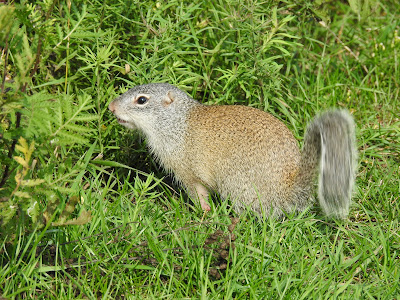Actually out in Agate Bay is a second lighthouse, Two Harbors East Breakwater Light. This much smaller structure was built in 1906 and remains in official service.
Two Harbors is very much a working harbour, and has been since the late nineteenth century. The boat below, the Edna G., was built in 1896, spent most of her career (except for two years on the East Coast during the First World War) right here in Two Harbors, and at the time of her retirement in 1981 was the last coal-fired, steam-powered tug working on the Great Lakes.
At the time of our visit, one such ship, the Arthur M. Anderson, had just finished loading. (The Anderson, incidentally, was the last ship in contact with the Edmund Fitzgerald and the first on the scene to search for survivors.) We watched her (in the West, a ship is always "she" even if named for a male director of U.S. Steel) slowly back out of the dock and laboriously turn...
...then head out past the breakwater lighthouse to Lake Superior, where she remained in sight for at least an hour, headed up the lake toward Thunder Bay.
By some estimates, up to three-quarters of the steel produced by the United States during the Second World War originated in the Iron Ranges of northern Minnesota, ending up in ships, tanks, and airplanes throughout the European and Pacific theatres. So, some pretty significant ore moving through here...
Jessa and I, though, are more inclined to notice other types of natural resources—squirrels, wildflowers, moss and lichen, even rocks without economic or strategic value—so here are some more pictures from Two Harbors. Enjoy.





































